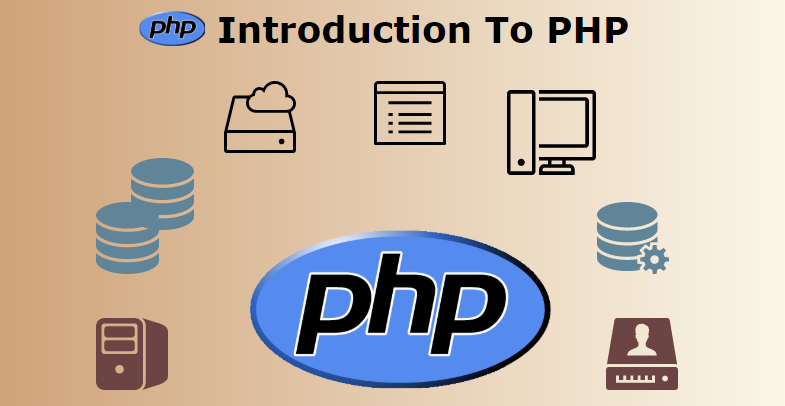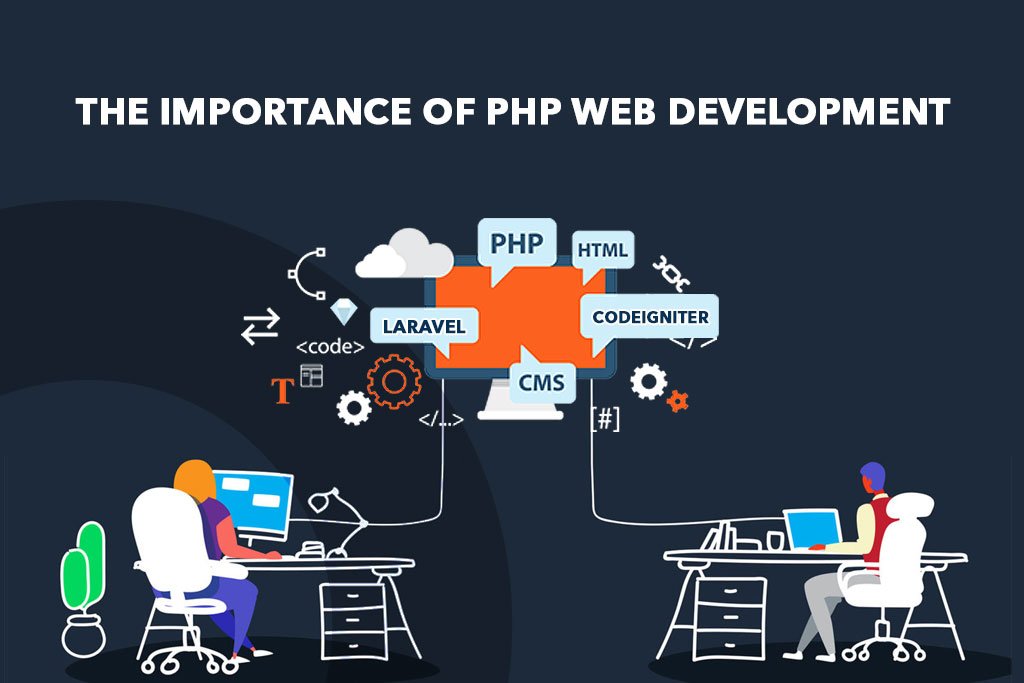
What Is PHP? A Definitive Guide
PHP is a common language that many companies use to create the back-ends of their websites. It has many applications that make it an ideal language for different projects. Reviewing the basics about Hypertext Preprocessor and its uses can help you determine if it’s a wonderful language for you to learn to advance in your career.
Table of Contents
What is PHP?

PHP, which stands for “PHP: Hypertext Preprocessor” (a recursive acronym), is a popular open-source scripting language mainly used for web development. It is especially well-suited for creating dynamic, interactive websites and web applications. PHP is executed on the server side, which means that it runs on the server and generates HTML to be sent to the client (browser).
key features of PHP:
- Server-Side Language: PHP code runs on the server, and the result (usually HTML) is sent to the client (user’s browser). This makes PHP suitable for creating dynamic web pages that interact with databases and other server-side resources.
- Simplicity and Familiarity: PHP syntax is similar to other programming languages such as C and JavaScript, making it relatively easy to learn for developers already familiar with these languages.
- Interoperability with HTML: PHP can be embedded directly in HTML code, making it easy to create web pages with dynamic content.
- Integration with Databases: PHP has built-in support for many databases such as MySQL, PostgreSQL, SQLite, and others, making it easy to work with data in web applications.
- Cross-Platform Compatibility: Hypertext Preprocessor runs on various platforms, including Windows, Linux, and macOS, making it a versatile choice for web development.
- Extensive Community and Libraries: Hypertext Preprocessor has a large developer community, and there are many libraries and frameworks available for Hypertext Preprocessor (such as Laravel, Symfony, and CodeIgniter) that can help streamline development.
- Performance and Speed: Hypertext Preprocessor is designed to handle high traffic and performance requirements efficiently.
Why is PHP Important for web development?

PHP was among the first server-side languages to be integrated with HTML to create interactive webpages. Here are some of the reasons PHP is a preferred development tool among users:
- Ease of Learning and Use: PHP’s syntax is relatively straightforward and similar to other popular languages like C and JavaScript, making it easy for new developers to pick up and use.
- Server-Side Scripting: Hypertext Preprocessor runs on the server and allows developers to build dynamic web pages and applications that can interact with databases, manage user sessions, and execute business logic.
- Integration with Databases: Hypertext Preprocessor has built-in support for many databases, including MySQL, PostgreSQL, and SQLite, allowing seamless interaction with data stores for web applications.
- Flexibility: PHP can be embedded directly into HTML, which makes it easy to combine static and dynamic content within the same web page. Developers can also use Hypertext Preprocessor with a variety of front-end technologies.
- Performance: Hypertext Preprocessor is optimized for web development, enabling developers to create efficient, fast-loading web applications.
- Extensive Ecosystem: Hypertext Preprocessor has a large and active community of developers who contribute libraries, frameworks, and tools. Popular frameworks like Laravel, Symfony, and CodeIgniter help streamline development and provide best practices.
- Cross-Platform Compatibility: Hypertext Preprocessor can run on different operating systems (such as Windows, Linux, and macOS) and is supported by many web servers (such as Apache and Nginx), making it versatile and adaptable to different hosting environments.
- Mature and Established: Hypertext Preprocessor has been around for a long time and has proven itself as a reliable choice for web development. Many popular content management systems (CMS) like WordPress, Drupal, and Joomla are built using PHP.
- Security Features: Hypertext Preprocessor provides various security features and functions to help developers write secure web applications. By following best practices and using established frameworks, developers can create safe and reliable software.
- Cost-Effective: Hypertext Preprocessor is open-source and free to use, which makes it an affordable choice for web development projects.
What can you do with PHP?
PHP is a versatile scripting language that allows developers to create a variety of web-based applications and features. Here are some of the things you can do with PHP:
- Create Dynamic Web Pages: Hypertext Preprocessor can generate dynamic HTML content based on data or user interactions. It can embed variables, loops, and conditionals into HTML to create pages that change according to different conditions.
- Build Web Applications: Hypertext Preprocessor is widely used for developing web applications, such as online stores, forums, and content management systems (CMS). It supports complex logic and can handle various tasks such as form submission, data processing, and user authentication.
- Interact with Databases: Hypertext Preprocessor can connect to various database management systems, such as MySQL, PostgreSQL, SQLite, and others. This allows developers to store, retrieve, update, and delete data as needed for their applications.
- Create RESTful APIs: Hypertext Preprocessor can be used to build RESTful APIs that allow different applications or services to communicate and exchange data. This is useful for creating backends for mobile applications or other web applications.
- Manage User Sessions and Cookies: Hypertext Preprocessor provides built-in support for managing user sessions and cookies. This is important for implementing features such as login systems, shopping carts, and user preferences.
- Handle File Uploads and Downloads: Hypertext Preprocessor can manage file uploads and downloads, allowing users to interact with files such as images, documents, and other types of data.
- Perform Server-Side Processing: Hypertext Preprocessor can handle various server-side tasks, such as sending emails, processing forms, and generating PDFs or images.
- Integrate with External Services: Hypertext Preprocessor can communicate with external APIs and services, allowing developers to integrate their applications with third-party tools such as payment gateways, social media platforms, and data providers.
- Implement Security Measures: Hypertext Preprocessor provides various functions and features to help developers write secure applications, such as data validation, sanitization, and prevention of common attacks like SQL injection and cross-site scripting (XSS).
- Automate Tasks: Hypertext Preprocessor scripts can be used to automate tasks on the server, such as scheduling backups, cleaning up files, and sending periodic notifications.
- Use Popular Frameworks: There are many Hypertext Preprocessor frameworks available, such as Laravel, Symfony, and CodeIgniter, which help developers create robust and maintainable web applications more efficiently.
Benefits of PHP

PHP offers several benefits that make it a popular choice for web development. Here are some of the key advantages of using PHP:
- Ease of Learning: Hypertext Preprocessor has a relatively simple and intuitive syntax, making it easy for beginners to pick up and start coding. It also shares similarities with other popular languages like C and JavaScript.
- Open-Source: Hypertext Preprocessor is open-source and free to use. This makes it an attractive option for developers and organizations looking to minimize costs.
- Cross-Platform Compatibility: Hypertext Preprocessor runs on various platforms, including Windows, Linux, and macOS, and works with different web servers such as Apache and Nginx. This versatility makes it easy to deploy PHP applications in different environments.
- Community Support: Hypertext Preprocessor has a large and active community of developers who contribute to its development, provide support, and create libraries, tools, and frameworks. This extensive community support ensures that PHP remains up-to-date and well-maintained.
- Rich Ecosystem of Libraries and Frameworks: Hypertext Preprocessor has a wide range of libraries and frameworks such as Laravel, Symfony, and CodeIgniter, which streamline development and provide best practices and ready-to-use components.
- Database Integration: Hypertext Preprocessor supports numerous databases, including MySQL, PostgreSQL, and SQLite, allowing developers to interact with various data sources seamlessly.
- Performance Improvements: Hypertext Preprocessor has undergone several improvements over the years, leading to better performance and efficiency in handling web requests.
- Extensive Documentation: Hypertext Preprocessor documentation is thorough and accessible, making it easier for developers to find information and resources.
- Wide Adoption: Many websites and web applications use Hypertext Preprocessor , including some of the most popular platforms like WordPress, Drupal, and Joomla. This wide adoption means there is a wealth of tutorials, guides, and other resources available for developers.
- Security Features: Hypertext Preprocessor includes various built-in functions and features to help developers write secure applications, such as data validation, sanitization, and protections against common vulnerabilities.
- Flexible and Scalable: Hypertext Preprocessor allows developers to build a variety of web applications, from simple websites to complex web applications. Additionally, with proper architecture and optimization, PHP applications can be scaled to handle high traffic.
- Ease of Embedding: Hypertext Preprocessor can be easily embedded into HTML, allowing developers to combine server-side logic with front-end content in a straightforward manner.
Advantages of PHP
- Open Source: Hypertext Preprocessor is an open-source language, making it freely available for use and distribution. This encourages a large community of developers, contributing to its growth and improvement.
- Easy to Learn: Hypertext Preprocessor syntax is similar to C and other programming languages, making it relatively easy for developers to learn, especially for those with a background in programming.
- Web Integration: Hypertext Preprocessor is designed specifically for web development and is embedded within HTML. It seamlessly integrates with various web technologies, facilitating the creation of dynamic and interactive web pages.
- Database Support: Hypertext Preprocessor has excellent support for various databases, including MySQL, PostgreSQL, SQLite, and more. This makes it easy to connect and interact with databases, a crucial aspect of many web applications.
- Cross-Platform Compatibility: Hypertext Preprocessor is platform-independent and runs on various operating systems, including Windows, Linux, macOS, and others. This ensures compatibility across different environments.
- Large Community and Documentation: Hypertext Preprocessor has a vast and active community of developers. The abundance of online resources, tutorials, and documentation makes it easier for developers to find solutions and seek help when needed.
- Frameworks and CMS: There are popular Hypertext Preprocessor frameworks like Laravel, Symfony, and CodeIgniter, which provide pre-built modules and features, aiding in rapid development. Additionally, PHP supports widely used content management systems (CMS) like WordPress and Joomla.
- Server-Side Scripting: Hypertext Preprocessor scripts are executed on the server, reducing the load on the client’s side. This server-side scripting capability is crucial for generating dynamic content and performing server-related tasks.
- Community Support: The Hypertext Preprocessor community actively contributes to the language’s development, ensuring regular updates, security patches, and improvements.
Disadvantages of PHP
- Inconsistency: Hypertext Preprocessor has been criticized for inconsistencies in function names and parameter orders. This can lead to confusion for developers, especially when working with a mix of older and newer functions.
- Security Concerns: If not handled properly, PHP code may be susceptible to security vulnerabilities, such as SQL injection and cross-site scripting (XSS). Developers need to be cautious and follow best practices to secure PHP applications.
- Performance: While PHP performs well for many web applications, it may not be as fast as some compiled languages like C or Java. However, advancements and optimizations in recent versions have improved performance.
- Lack of Modern Features: Compared to newer languages, PHP may lack some modern language features. However, recent versions of PHP have introduced improvements and features to address this concern.
- Scalability Challenges: PHP can face challenges when it comes to scaling large and complex applications. Developers may need to adopt additional tools or frameworks to address scalability issues.
- Not Suitable for Large-Scale Applications: While PHP is suitable for small to medium-sized projects, it might not be the best choice for extremely large and complex applications where more structured languages might be preferred.
- Limited Object-Oriented Programming (OOP) Support: Although PHP supports OOP, its implementation has been criticized for not being as robust as in some other languages. However, recent versions have introduced improvements to enhance OOP capabilities.
